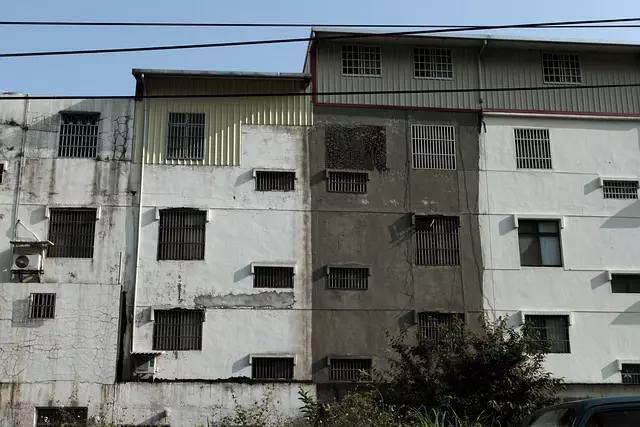Kratom, derived from the Mitragyna speciosa tree native to Southeast Asia, is under investigation as a potential alternative treatment for opioid addiction. Its alkaloids, mitragynine and 7-hydroxymitragynine, may help ease withdrawal symptoms and manage cravings associated with opiate dependency. While it holds promise in therapeutic settings for reducing the intensity of withdrawal experiences, the use of kratom necessitates careful consideration due to its complex regulatory environment and potential side effects. The cultivation of kratom in Salt Lake City (SLC), such as through the 'grow kratom SLV' initiative, requires meticulous management of environmental conditions within greenhouses, including climate control and soil preparation tailored to the local climate. This ensures the production of high-quality kratom that can contribute to recovery programs. Healthcare providers are examining its pharmacological effects and interactions within the body to determine its role in addiction treatment, typically as part of a comprehensive recovery strategy under medical supervision. As SLC explores integrating kratom into holistic recovery practices, it's important for individuals to consult with qualified professionals to safely incorporate this substance into their treatment regimen, with ongoing research and clinical trials assessing its efficacy and safety.
exploring the therapeutic potential of kratom as an adjunctive treatment for addiction, this article delves into its integration within holistic recovery plans, particularly in Salt Lake City. We’ll guide you through understanding kratom’s role, offer insights into cultivating this plant within the region’s unique climate, and discuss how it can be a part of effective, comprehensive recovery strategies. Whether you’re seeking information on its medicinal properties or considering growing kratom in SLC, this piece is designed to provide valuable, evidence-based insights.
- Understanding Kratom's Role in Addiction Treatment and Recovery
- The Process of Growing Kratom in SLC: An Overview for Potential Cultivators
- Integrating Kratom into a Holistic Addiction Recovery Plan in Salt Lake City
Understanding Kratom's Role in Addiction Treatment and Recovery

Kratom, a plant native to Southeast Asia, has garnered attention within the realm of addiction treatment and recovery, particularly as individuals seek alternatives to traditional medications for opioid addiction. The mitragynine and 7-hydroxymitragynine alkaloids found in kratom leaves have been studied for their potential to ease withdrawal symptoms and curb cravings associated with opiate dependency. In therapeutic settings, kratom may offer a supportive role by mitigating the intensity of withdrawal effects, which is crucial for individuals transitioning from more potent substances. However, it’s important to approach its use with caution due to its complex regulatory status and potential for side effects. The cultivation of kratom, such as grow kratom SLC (Salt Lake City), must be conducted responsibly to ensure the quality and purity of the product. Understanding the nuances of kratom’s pharmacology and its interaction with the body is essential for healthcare providers who are considering it as a treatment option. As research continues, it becomes increasingly clear that kratom could be a valuable component in a comprehensive recovery plan when used under medical supervision. Individuals interested in kratom as part of their addiction treatment should consult with qualified professionals to navigate this approach safely and effectively.
The Process of Growing Kratom in SLC: An Overview for Potential Cultivators

In Salt Lake City, cultivating kratom (Mitragyna speciosa) presents a unique set of challenges and opportunities for potential growers. The climate of SLC, with its distinct seasons, requires careful planning and management to optimize the growth conditions for this tropical evergreen tree. Prospective cultivators should consider the species’ native environment, which is typically found in Southeast Asia’s humid and rainy climates. To replicate these conditions in SLC, growers must implement controlled environments such as greenhouses with supplemental lighting and humidity control.
The process of growing kratom in Salt Lake City involves selecting the right strain for the local climate, preparing the soil to maintain optimal acidity, and providing the necessary support for the young plants. As the trees mature, careful attention to their light requirements and protection from extreme temperature fluctuations become crucial. Automated systems can help regulate these factors, ensuring consistent leaf quality. It’s also essential to adhere to local agricultural regulations and obtain any necessary permits. By understanding the nuances of kratom cultivation in SLC’s unique environment, growers can produce high-quality kratom that supports addiction treatment and recovery efforts.
Integrating Kratom into a Holistic Addiction Recovery Plan in Salt Lake City

In Salt Lake City, the integration of Kratom into a holistic addiction recovery plan is gaining traction as a potential alternative for those seeking to overcome substance use disorders. Kratom, derived from the leaves of the Mitragyna speciosa tree, has been recognized for its alkaloid compounds that may aid in managing withdrawal symptoms and cravings. Advocates for its use argue that Kratom can serve as a bridge during the critical transition phase of recovery, offering relief without the risk of opioid dependency. The city’s growing community interested in Kratom cultivation, referred to as ‘grow Kratom SLV’ by local enthusiasts, is not only fostering self-sufficiency but also ensuring a consistent and controlled supply of the plant for those who find it beneficial in their recovery journey. This local cultivation aligns with the holistic approach to addiction treatment, emphasizing natural and plant-based solutions alongside traditional therapeutic methods.
The potential of Kratom as a component of a holistic addiction recovery plan is being explored within Salt Lake City’s healthcare and wellness circles. Clinicians and recovery specialists are examining the therapeutic properties of Kratom, noting its role in promoting relaxation, reducing anxiety, and managing pain without the negative side effects associated with traditional medications. As part of a comprehensive recovery strategy, Kratom may be used judiciously under professional guidance to complement behavioral therapies, counseling, and support groups. The city’s progressive stance on alternative treatments is facilitating research and clinical trials to further understand Kratom’s efficacy and safety in the context of addiction recovery, ultimately aiming to provide individuals with diverse and effective options for wellness and healing.
In conclusion, the exploration of Kratom as an adjunct in addiction treatment and recovery, particularly in Salt Lake City, offers promising insights. The intricacies of cultivating Kratom locally have been elucidated, highlighting the potential for sustainable and controlled growth within the region through the section “The Process of Growing Kratom in SLC: An Overview for Potential Cultivators.” Moreover, the article has underscored the importance of integrating Kratom into a broader holistic recovery plan, as outlined in “Integrating Kratom into a Holistic Addiction Recovery Plan in Salt Lake City.” It is clear that while Kratom may not be a panacea for addiction, its inclusion in a comprehensive treatment strategy warrants serious consideration by healthcare professionals and policymakers. Prospective cultivators and recovery advocates in SLC now have valuable information to inform their approaches to addiction treatment and support the well-being of individuals seeking recovery. Understanding Kratom’s role is just the beginning; ongoing research and clinical trials will further illuminate its efficacy and potential within the realm of addiction treatment.






